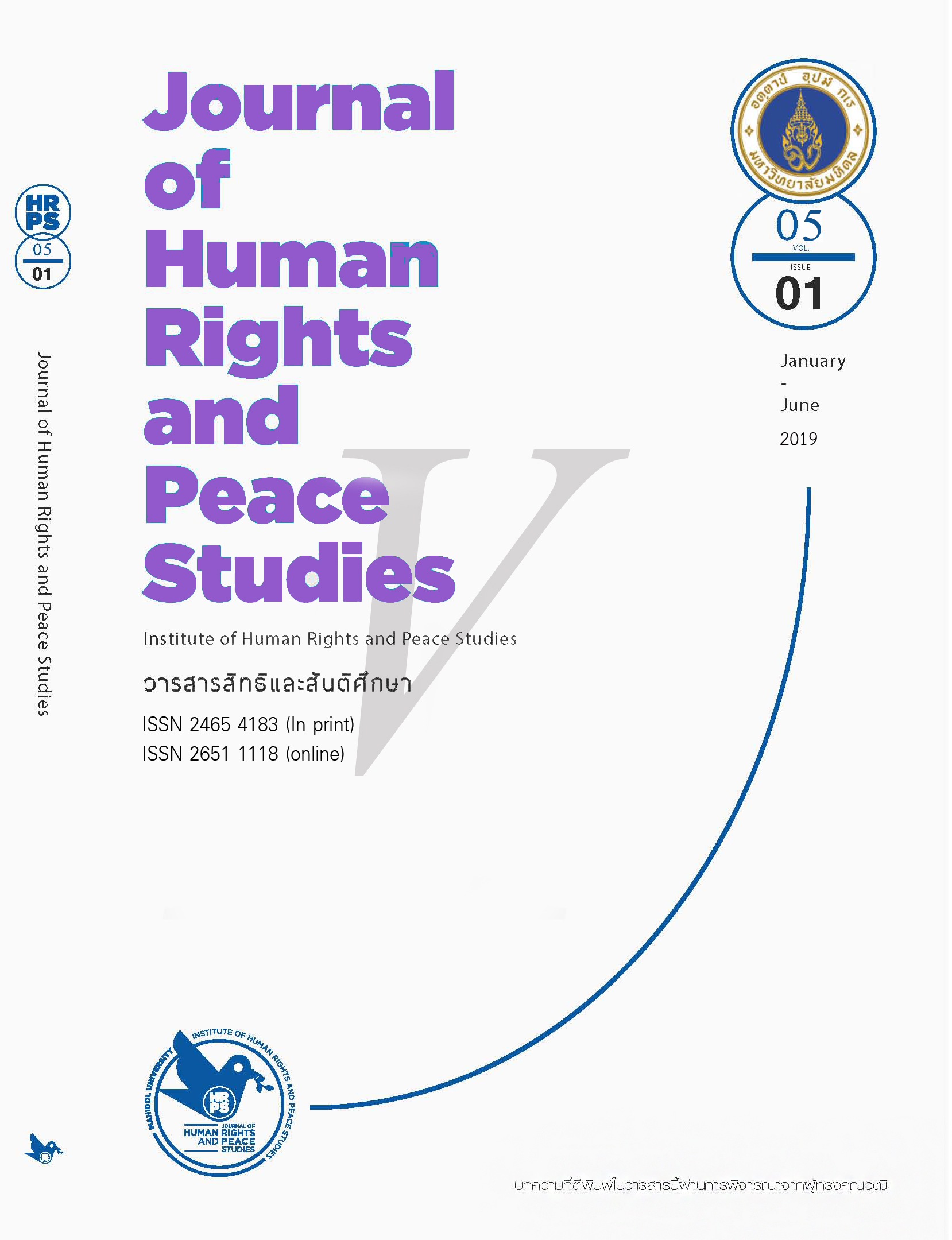Terminology Considerations on Trafficking of Children for Sexual Purposes based on the Luxembourg Guidelines
Main Article Content
Abstract
As knowledge developed on trafficking of children for sexual purposes, a range of different terms emerged around the world to describe the phenomenon. Confusion and inconsistency in the use of terms, as well as the existence of diverging definitions and interpretations of key issues has contributed to inaccuracy and imprecision in data. This hinders actions to generate clear evidence and reduce the harmful effects for the victims.
In 2016, a global Interagency Working Group, established at the initiative of ECPAT International and composed of representatives from UN agencies, child rights NGOs, and law enforcement agencies, developed and endorsed the “Terminology Guidelines for the Protection of Children from Sexual Exploitation and Sexual Abuse” (hereinafter “Luxembourg Guidelines”). The Luxembourg Guidelines are available online in English, French, Spanish, German, and Turkish and continue to be adapted into further languages to become increasingly available to child protection professionals all over the world.
Although the Luxembourg Guidelines broadly and systematically identify, analyse and define a wide range of best/common terms that should be used to describe sexual exploitation of children and its manifestations, this paper only discusses terminology considerations on trafficking of children for sexual purposes.
Article Details
The views, opinions, and pictures expressed in this journal are those of the authors and do not necessarily reflect the opinions and viewpoints of the editor and the editorial board. All rights are reserved by the authors and the Institute of Human Rights and Peace Studies of Mahidol University. No part of this journal may be reproduced, stored in a retrieval system, or transmitted in any form or by any means without the prior permission in writing from the journal’s editor, or as expressly permitted by law, or under terms agreed with the appropriate reprographics rights organization. Non-commercial use of information in this journal must be properly referenced.
References
Gallagher, A. (2001). Human rights and the new UN Protocols on trafficking and migrant smuggling: A preliminary analysis. Human Rights Quarterly, 23(4), 975-1004. doi: 10.1353/hrq.2001.0049
Gallagher, A. (2002). Trafficking, smuggling and human rights: Tricks and treaties. Forced Migration Review, 12, 25-28. Retrieved from https://www.fmreview.org/sites/fmr/files/FMRdownloads /en/development-induced-displacement/gallagher.pdf
George, A., Vindhya, U., & Ray, S. (2010). Sex trafficking and sex work: Definitions, debates and dynamics - A review of literature. Economic & Political Weekly, 45(17), 64-73. Retrieved from https://www.researchgate.net/publication/289319658_Sex_trafficking_and_sex_work_Definitions_debates_and_dynamics_-_A_review_of_literature
Global Alliance Against Trafficking in Women (GAATW). (2017). Anti-trafficking review (No. 8: Special Issue – Where’s the Evidence?). Retrieved from https://gaatw.org/ATR/AntiTraffickingReview_issue8.pdf
Greijer, S. (2017). Handbook for the translation and adaptation of the terminology guidelines for the protection of children from sexual exploitation and sexual abuse. Retrieved from https://www.ecpat.org/wp-content/uploads/2017/12/Handbook-for-the-translation-and-adaption-of-the-Terminology-Guidelines-for-the-protection-of-children-from-sexual-exploitation-and-sexual-abuse.pdf
Greijer, S. & Doek, J. (2016). Terminology Guidelines for the protection of children from sexual exploitation and sexual abuse. Retrieved from https://luxembourgguidelines.org/english-version/
Hoyle, C., Bosworth, M., & Dempsey, M. (2011). Labelling the victims of sex trafficking: Exploring the borderland between rhetoric and reality. Social & Legal Studies, 20(3), 313-329. doi:10.1177/0964663911405394
International Organization for Migration (IOM). (2013). Children on the move. Retrieved from https://publications.iom.int/system/files/pdf/children_on_the_move_15may.pdf
Leary, M. G. (2016). The language of child sexual abuse and exploitation. Refining Child Pornography Law: Crime, Language, and Social Consequences, 109-144. Retrieved from https://www.jstor.org/stable/j.ctt1gk08jr.8
Mitra, A. (2016, September 12). The story of ‘Missing Children’: Unaccompanied minors in the prevailing refugee crisis. Border Criminologies. [Web log post]. Retrieved from: https://www.law.ox.ac.uk/research-subject-groups/centre-criminology/centreborder-criminologies/blog/2016/09/story-%E2%80%98missing
Pace, P. & Severance, K. (2016). Migration terminology matters. Forced Migration Review, 51, 69-70. Retrieved from: https://www.fmreview.org/sites/fmr/files/FMRdownloads/en/destination-europe/pace-severance.pdf.
UNICEF Innocenti Research Centre. (2009). Handbook on the optional protocol on the sale of children, child prostitution and child pornography. Retrieved from https://www.unicef-irc.org/publications/pdf/optional_protocol_eng.pdf.
United Nations Economic and Social Council (ECOSOC). (1957). Supplementary Convention on the Abolition of Slavery, the Slave Trade, and Institutions and Practices Similar to Slavery: adopted by a Conference of Plenipotentiaries convened by Economic and Social Council resolu¬tion 608(XXI) of 30 April 1956 and done at Geneva on 7 September 1956 (Apr. 30, 1957). Retrieved from https://www.ohchr.org/EN/ProfessionalInterest/Pages/SupplementaryConventionAbolitionOfSlavery.aspx
United Nations General Assembly (U.N.G.A.). (2001). United Nations Convention against Transnational Organized Crime: Annex 2 Protocol to Prevent, Suppress and Punish Trafficking in Persons, Especially Women and Children, supplementing the United Nations Convention against Transnational Organized Crime. G.A. Res. 55/25, 55th Sess., U.N. Doc. A/RES/55/25 (Jan. 8, 2001). Retrieved from https://undocs.org/en/A/RES/55/25
United Nations General Assembly (U.N.G.A.). (2019). Global Compact for Safe, Orderly and Regular Migration, G.A. Res. 73/195, 73th Sess., U.N. Doc. A/RES/73/195 (Jan. 11, 2019). Retrieved from https://undocs.org/A/RES/73/195

